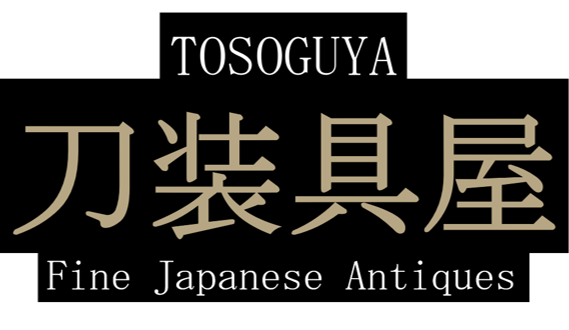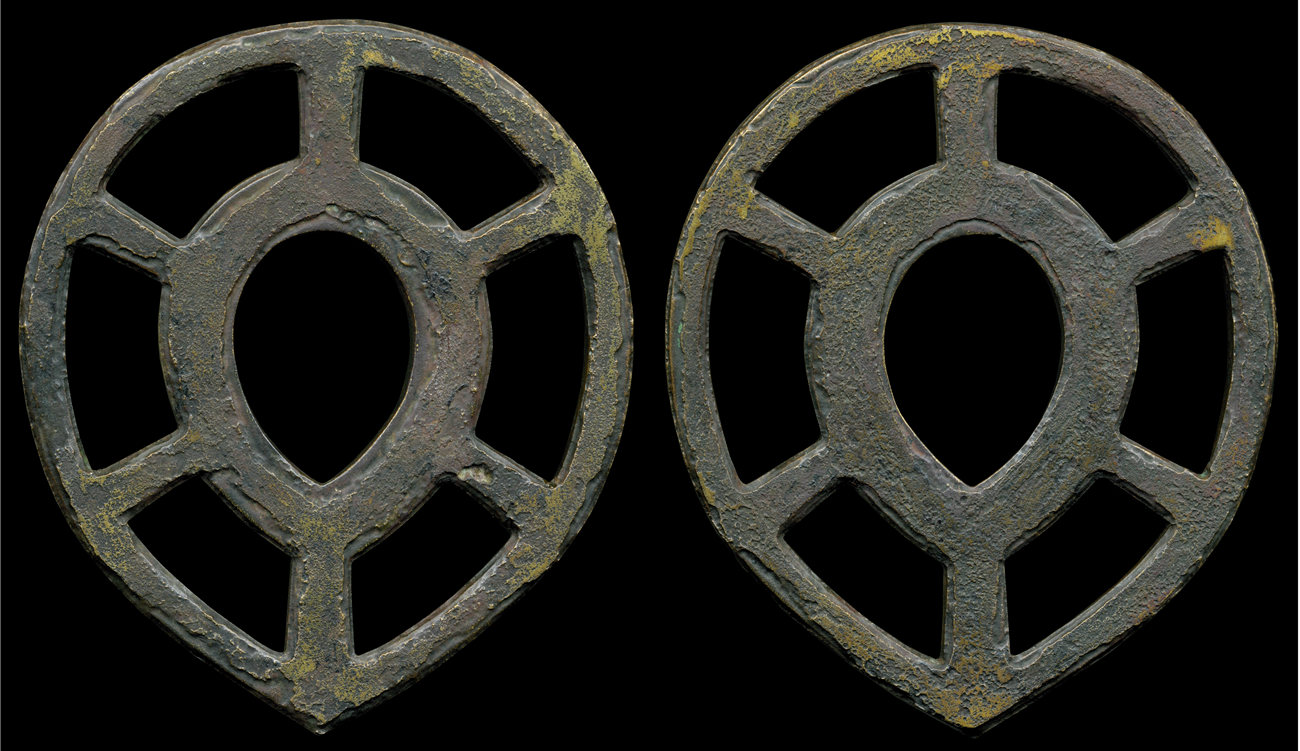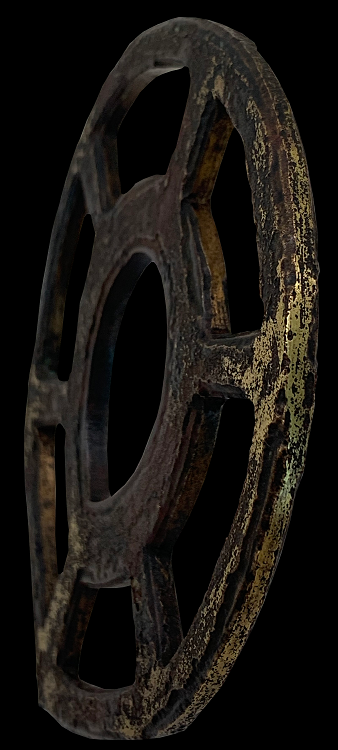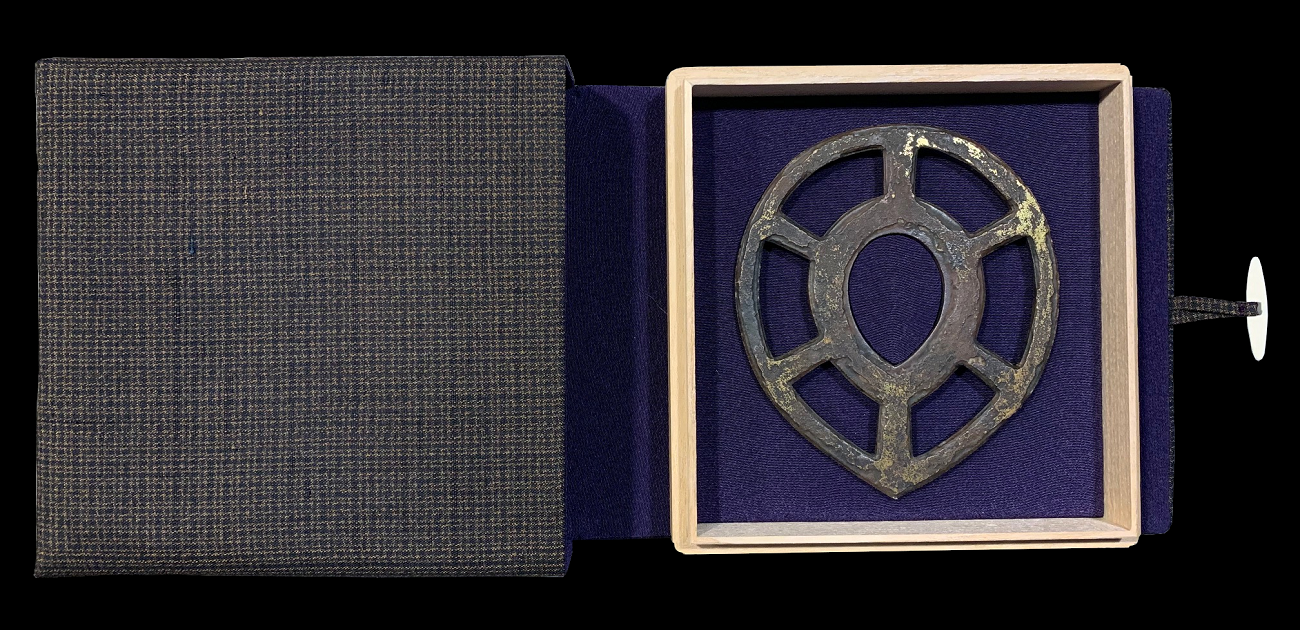

Early period tsuba termed Tōran-kei (倒卵形), Toran meaning 'egg-shaped'. This type of tsuba is among the earliest works of Japanese tsubako. This tsuba is cast from yellow bronze, and then gilded in gold, some of which remains on both sides of the plate and within the 6 sukashi openings around the nakago-ana. This is a relatively large tsuba, and quite substantial due to the weight of the bronze. It comes mounted in a custom-fitted box, with external box-sleeve or shifuku.
Most of these types of tsuba have come from ancient Japanese burial mounds, making them around 1500 years old, and thus making them the predecessors of all other tsuba. They date to the period when Buddhism was introduced to Japan, and when the Imperial lineage was solidifying its status in Japan. They were mounted on straight swords called Chokuto, and were closely related to the Korean mainland examples of the 3 Kindgoms period. In fact, during this period, Japan was a major regional naval and military power, and was closely affiliated with the Paekche Kingdom, and had established its own colony on the Korean peninsula, called Mimana.
Measurements: 10.6cm x 9.2cm x 0.45cm
Kofun Period (古墳時代), 5-6th century
HOLD


